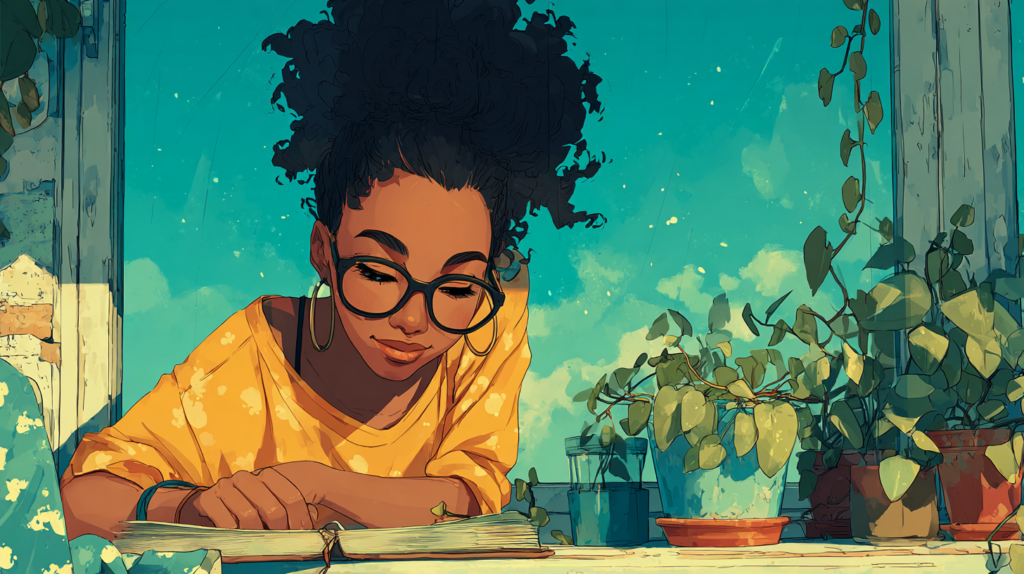Think about your favourite meals—rice and stew, eba and okra soup, or jollof rice. To prepare these, we use ingredients like tomatoes, onions, vegetables, and grains. These ingredients come mostly from plants. But have you ever asked yourself: how do plants get their own food?
Unlike humans and animals, plants do not eat food. Instead, they make their food using sunlight, water, and a gas from the air. This process is called photosynthesis.
What Is Photosynthesis?
Photosynthesis is the process by which green plants use sunlight to make their food from water and carbon dioxide. During this process, plants also release oxygen into the air. Oxygen is the gas that humans and animals need to breathe and stay alive.
What Does “Photosynthesis” Mean?
The word photosynthesis is made up of two parts:
- Photo means light
- Synthesis means to put together or to build
So, photosynthesis means “putting together using light”. That’s exactly what plants do—they use light to build or make their food.

What Is Needed for Photosynthesis?
To carry out photosynthesis, a plant needs three main things:
- Sunlight – the energy that starts the process
- Water – taken up from the soil through the roots
- Carbon dioxide – a gas found in the air, which enters the leaves through small openings called stomata
Using these three things, plants produce:
- Glucose – a type of sugar that serves as the plant’s food
- Oxygen – a gas that is released into the air
The Photosynthesis Equation
Scientists use an equation to show what happens during photosynthesis:
Carbon dioxide + Water + Sunlight → Glucose + Oxygen
Or more scientifically:
6 CO₂ + 6 H₂O + light energy → C₆H₁₂O₆ + 6 O₂
Here:
- CO₂ stands for carbon dioxide
- H₂O stands for water
- C₆H₁₂O₆ stands for glucose (the sugar)
- O₂ stands for oxygen
Where Does Photosynthesis Happen?
You may not know this, but photosynthesis takes place in the leaves of green plants. Inside each leaf are tiny parts called cells. Within these cells are special structures called chloroplasts.
Chloroplasts contain a green substance called chlorophyll, which traps sunlight. This is the reason why most plants are green in colour. Chlorophyll uses the energy from sunlight to help the plant make food.
How Photosynthesis Works
- The chlorophyll in the plant’s leaves traps energy from sunlight.
- Water is absorbed from the soil through the roots and transported to the leaves.
- Carbon dioxide, a gas in the air, enters the leaves through tiny holes called stomata.
- Inside the chloroplasts, the water and carbon dioxide are changed into glucose (a type of sugar) using the energy from the sunlight.
- Oxygen is released as a waste product and goes back into the air.
Why This Is Important
Photosynthesis is one of the most important processes on Earth. Here’s why:
- It produces food for the plant. Without it, plants would not grow.
- It produces oxygen, which all living things need to breathe.
- It starts the food chain. Plants are eaten by animals, and those animals are eaten by other animals and humans.
Without photosynthesis, there would be no food and no oxygen. Life as we know it would not exist.
Factors That Affect Photosynthesis
The rate of photosynthesis can increase or decrease depending on:
- Light – The more sunlight, the more energy available.
- Water – Without water, the process cannot take place.
- Carbon dioxide – A good supply helps speed up the process.
- Temperature – Photosynthesis works best when it is not too hot or too cold.
Quick Summary Table
| Component | Role in Photosynthesis |
| Sunlight | Provides energy for the process |
| Carbon dioxide | A gas from the air used to make glucose |
| Water | Absorbed from the soil, used to make food |
| Chlorophyll | Traps sunlight inside the leaf cells |
| Chloroplasts | Where the food-making process happens |
| Glucose | The sugar (food) made by the plant |
| Oxygen | A gas released into the air as a by-product |
Conclusion
Photosynthesis is how green plants make their food using sunlight, water, and carbon dioxide. This process happens in the leaves, using chlorophyll inside the chloroplasts. While making food for themselves, plants also produce oxygen, which all living things need to survive.
So, the next time you eat rice or vegetables, remember: it all began with a plant, and that plant made its food through photosynthesis.
Do you find it easier to understand your lessons when you learn with visual aids? The uLesson app offers a wide range of engaging video lessons that break down complex topics into simple, easy-to-understand explanations.
Once you’re done watching, you can take short quizzes designed to help you remember what you’ve learnt and test your understanding. It’s a smart way to study and build confidence in every subject. Download the uLesson app now or use the web version.




One comment
Zaproxy dolore alias impedit expedita quisquam.